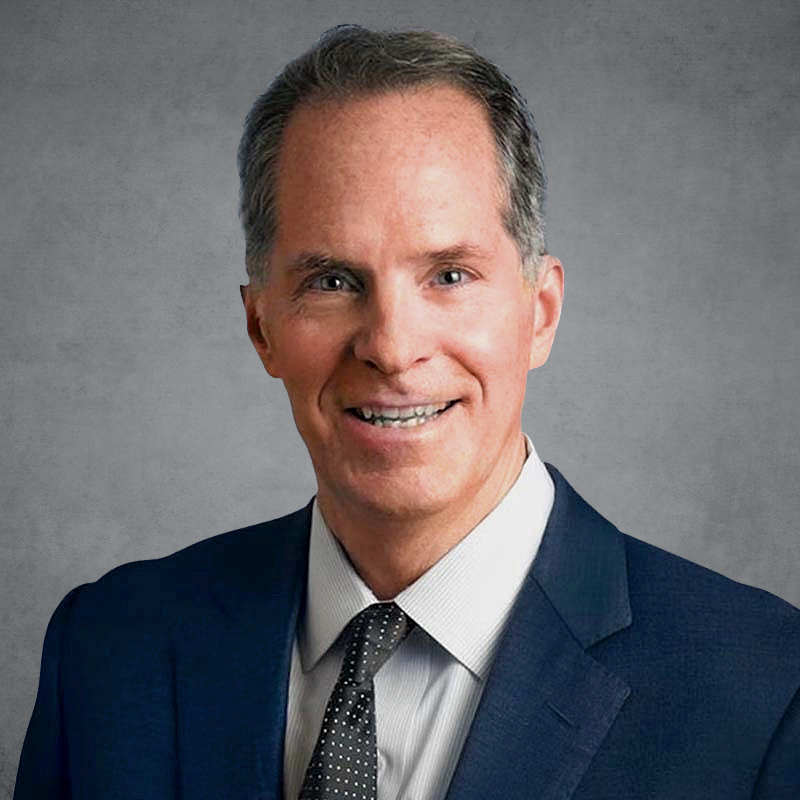Becoming Inescapable: Predicting Behavior and Taking Action to Attract and Retain Loyal Customers


Executive Perspectives
From AI to machine learning to big data, powerful technology has given leaders new, robust tools to predict consumer behavior. Building mindshare isn’t just about knowing who your customers are, but deeply understanding what they need, what they feel and what they’ll likely do next — so brands can predict and personalize experiences across every touchpoint.
From models that predict expected purchases to decisions about the next-best offer for prospects, leaders can action their data to capitalize on engaged consumers while reaching new cohorts.
MANAGING GROWTH ACROSS THE ENTERPRISE
We have seen a growing trend of personalization at scale as AI and first-party data enable hyper-personalized experiences across channels. Consumers, even less savvy ones, expect tailored content, offers, and interactions at every touchpoint. Brands are now faced with the challenge of moving from segmentation to 1:1 personalization while respecting privacy, which means brands must coordinate across the lifecycle for a bespoke experience.
Bilt has done a fantastic job toeing this line by solving a real pain point and turning it into an ongoing, emotionally resonant experience. Bilt lets customers earn points for paying rent and offers a credit card with rewards across categories like travel, fitness and even a future home down payment. The lifestyle-centric ecosystem of the rewards app goes beyond traditional finance, including engaging partnerships with SoulCycle, Lyft, DoorDash, local restaurants and travel partners to embed it into customers’ daily routines. Bilt even recently acquired item-level receipt firm Banyon to give better insight into what customers are purchasing to power more tailored offers.1
Managing this personalization within an organization doesn’t fall solely within marketing — it’s an organization-wide movement. And the companies that do it best make mindshare a cultural operating system, not just a KPI.
Marketing and brand certainly play key roles in managing this movement, with the CMO and chief brand officer owning the storytelling, positioning and customer engagement strategy. They also manage creating consistent, emotionally resonant engagement and experiences across all touchpoints.
Customer and experience leaders bridge front-end brand moments and customer touchpoints with back-end operational delivery such as product, customer service, loyalty programs and feedback to make sure the business is aligned with customer needs and expectations. In tandem, technology leadership ensures the right data systems are in place to predict behavior and personalize at scale.
This cross-functional engagement is critical because the consumer journey is cross-functional. That means customer expectations go beyond the silo, and customers expect brands to show up for them seamlessly, whether they are interacting with sales, product, customer support or other teams. This seamless experience is crucial as customers don’t simply buy products – they buy into a lifestyle or cause. Community-led brands like Glossier and Gymshark thrive on emotional connections that span the lifecycle. That means brands must now engage as communities, with the strongest brands feeling like movements in themselves. Brands, then, are challenged with creating spaces where fans and consumers can engage with each other and not just the brand.
Brands must create customer-centric operating models that live across the business so they can show up for their customers as more than just their org chart. That requires data, experience design, product, marketing and support all moving in sync.
MONETIZING MINDSHARE
Mindshare directly impacts the bottom line by influencing consumer preference, loyalty and, ultimately, purchase behavior. But unlike hard metrics like revenue or conversions, mindshare is more intangible, and measuring it requires a smart mix of quantitative and qualitative signals – from brand awareness and recall surveys to search volume, web analytics and brand lift studies. It’s crucial to make sure measurements align with business outcomes and how mindshare correlates with lifts in sales, lower customer acquisition costs or improved retention.
Capturing mindshare may feel particularly complicated in an environment where consumers are constantly multitasking. With attention spans shorter than ever, brands that create short-form, snackable, story-driven content are leading, and brands that track metrics like share of voice and social sentiment can remain agile enough to act on insights to adjust their approach. For example, Duolingo has created a cheeky, unforgettable brand personality with a significant social presence, especially on TikTok. They even use the Duo owl in meme culture to stay top of mind and stop the scroll with quality content available at speed and scale. While many consumers might dread trying to speak a new language, Duolingo uses fun, snackable engagement to engage users in learning a language.
Engaging consumers in the “consideration” phase is often where brands win or lose the long game for building sustainable mindshare. Consideration is where mindshare becomes preference. Brands that show up consistently – with compelling content across channels – during consideration, not just awareness or purchase, build mental availability that supports repeat purchases and drives category ownership.
DATA AND TECHNOLOGY TO MEET CUSTOMERS
With social commerce becoming more mainstream, platforms like TikTok, Instagram and YouTube are no longer just marketing channels: They’ve evolved into full-fledged shopping destinations. With seamless experiences, consumers discover, evaluate and buy products without ever leaving their social app. The TikTok Shop, for example, is driving impulse buying with influencer-driven content tied directly to the checkout experience, with 37% of Americans under age 60 purchasing something via TikTok Shop since its launch and 48% of purchases stemming from influencer posts.2 Brands, then, must rethink traditional eCommerce funnels and focus more on creating content that sells within the platform itself.
That shift first requires data. In a world of limitless data, leaders must prioritize metrics that reflect customer value, predict future outcomes and inspire real-time action. That includes lifetime value as the ultimate measure of the health of your customer relationship that prioritizes long-term loyalty over short-term profitability and that can help determine the next-best action to take to engage a customer. Leaders must also measure journey friction to understand where (and why) customers are dropping off as they take these actions.
Experience and sentiment ladder up to emotional connection, and brands can measure metrics, like churn, retention and brand love, that indicate connection rather than just satisfaction – which drives loyalty.
Engagement that leads to action drives mindshare and, as a result, revenue. Businesses can consider engagement depth – how often are consumers choosing your brand if they have more than one relationship in the category? When I was at Amex, we used to talk about being “front of wallet” as the card that customers would pull out.
Beyond measuring data, businesses have technology applications that can help enable this high level of understanding. These tools include journey analytics applications, like Adobe Journey Optimizer, Thunderhead, Genesys and Pointillist, that optimize customer journeys across both digital and offline channels to reduce friction.
More traditional CRM platforms are still needed to track activities across the customer lifecycle, but customer data platforms like

Customer centricity is critical because loyal customers are a brand’s most powerful amplifiers, driving word of mouth, creating content and defending the brand.
- Janey Whiteside | Partner & Chief Growth Officer
Segment, Twilio CDP and Salesforce CDP can centralize customer data from across channels and sources into a single customer profile while feeding personalization strategies. Businesses can also take advantage of AI-powered predictive analytics tools, like Amplitude and Salesforce Einstein, that use machine learning models to forecast customer behavior and enable personalized offers based on likelihood to buy.
These tools help drive prediction and action, but leaders need to remember that tech is an enabler, not a standalone solution. Getting a comprehensive view requires cultural alignment, brand fit, data discipline and cross-functional collaboration to achieve results.
RELENTLESSLY CUSTOMER CENTRIC – WITHOUT OVERSTEPPING
Customer centricity is critical because loyal customers are a brand’s most powerful amplifiers, driving word of mouth, creating content and defending the brand. As we know, trust is a fragile brand asset and when long-time customers feel unheard, replaced, or misunderstood, it erodes trust — fast. That’s one of the reasons wireless customers began including new and existing customers in their best offers, because they recognized they were alienating existing ones by giving the best deals to new customers. It’s also why Bilt leverages status tiers, monthly rent day promotions and gamification to keep users within a specific segment engaged.
This holistic customer view comes with risks. Over-targeting or hyper-personalization, including referencing customer attributes they didn’t knowingly share, can feel invasive and lead to a loss of trust. Similarly, collecting more data than necessary (especially sensitive data) can raise red flags for consumers who are more vigilant about what companies are collecting. Brands are also actively working through issues of algorithms trained on biased or incomplete data that can lead to unfair outcomes, such as showing different offers to similar users based on flawed assumptions.
Brands can combat these risks – and avoid being creepy – by being transparent about their data use, including sharing what data they are collecting and why, and allowing easily customizable data preferences. Companies can also prioritize first-party data use from valuable customer exchanges, such as loyalty program information, declared preferences and account information rather than relying on third-party data. Relatedly, they can earn more information with progressive profiling, gathering more information as trust grows within the relationship. Finally, while brands never want to lose prospects or customers, making opt-outs easy and respecting consumers’ wishes can foster trust.
Maintaining this contract with consumers is becoming more important than ever as consumers vote with their wallets. Consumers support brands that align with their values, whether it’s sustainability, DEI or transparency. Things like data use violations, greenwashing and performative activism will get called out fast by discerning consumers. Brands must ensure they stay true to their purpose and values and back it up both internally and externally.
EMBRACE DISRUPTION TO CAPTURE MINDSHARE
Even as the way consumers discover, evaluate and buy changes, leaders can capitalize on this disruption to attract and retain loyal customers. As discussed, that means capitalizing on embracing data and AI responsibly to personalize, predict and optimize customer experience. It also means investing in agility so internal teams can respond, iterate and invest in the customer in real time. On the marketing side, it used to take weeks to approve a single Instagram post, but teams now must be able to move, share and engage instantly or they miss the moment.
Next, leaders must prioritize human connections over scale. Digital doesn’t mean impersonal – in fact, it can be hyper-personal. Using technology to engage customers can help amplify empathy and storytelling, not replace it. Relatedly, leaders must build for the ecosystem, not the channel, and think beyond campaign-centric strategies to develop always-on, always-engaging content, commerce and community strategies that operate in concert across owned, earned and paid channels.
Finally, painful as it is for many brands, this movement also requires a shift from control of a brand to collaboration. Leaders can no longer simply expect consumers to buy their narrative. They must let go of rigid brand narratives and invite customers, creators and communities to shape the story in tandem – because the brands that excel at engagement meet customers where they are and can turn engagement into loyalty.
The views and opinions expressed herein are solely those of the individual authors and do not necessarily represent those of The Consello Group. Consello is not responsible for and has not verified for accuracy any of the information contained herein. Any discussion of general market activity, industry or sector trends, or other broad-based economic, market, political or regulatory conditions should not be construed as research or advice and should not be relied upon. In addition, nothing in these materials constitutes a guarantee, projection or prediction of future events or results.






















